The description of genius with feminine images did not serve to bridge the gulf between male and female artists, partly because of the different ways that their creativity was conceived. Actual childbirth was regarded as an outgrowth of women’s “natural” biological role; their own particular emotions and sensitivities were similarly regarded as manifestations of what nature bestowed upon them. Their artistic expression was thereby categorized as less achievement than natural display; consequently the expression of feeling in women’s art was often seen as a manifestation of temperament, while strong feelings expressed in the work of men were interpreted as emotions conveyed with mastery and control. By this way of thinking, emotions in women’s art are a byproduct of nature; in contrast, the genius of the male artist produces a new creation that transcends the dictates of nature (Korsmeyer).
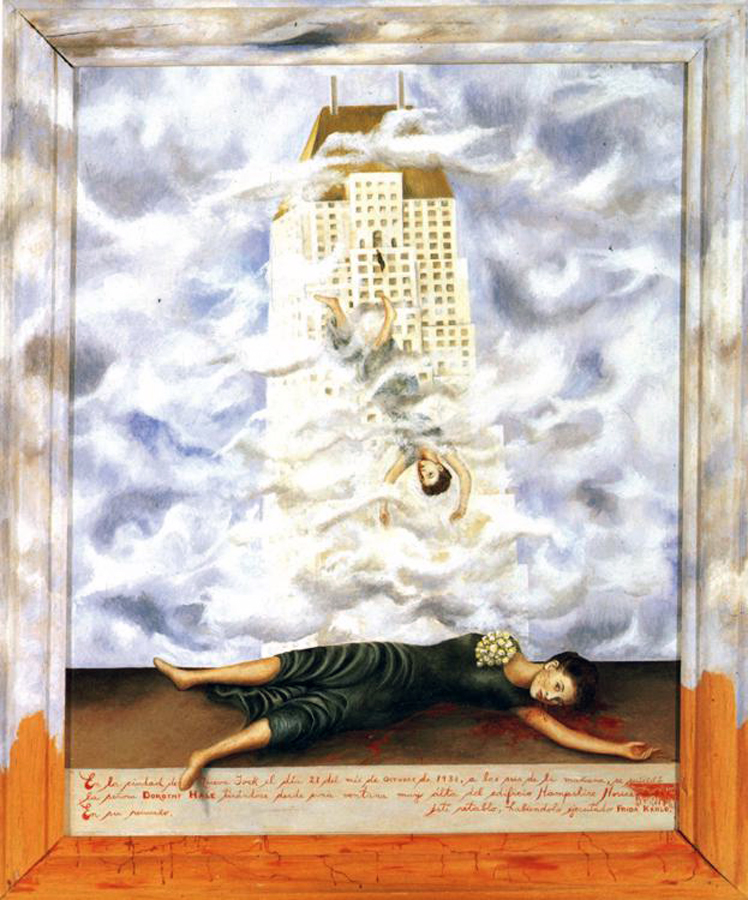
Kahlo. The Suicide of Dorothy Hale. " Feminist theory must take into account the circumstances of most women's lives as mothers, household workers, and caregivers, in addition to the pervasive misconception that women are genetically inferior to men. Feminist art notes that significant in the dominant (meaning especially Western) culture's patriarchal heritage is the preponderance of art made by males, and for male audiences, sometimes transgressing against females. Men have maintained a studio system which has excluded women from training as artists, a gallery system that has kept them from exhibiting and selling their work, as well as from being collected by museums — albeit somewhat less in recent years than before."
She was the first feminist. In 1792 Mary Wollstonecraft( 1759-1797 ) wrote a book to prove that her sex was as intelligent as the other; it was the first articulation of feminism . The essence of her thought was fairly straightforward: a woman’s mind is as good as a man’s. The logical extension of this was Mary”s assertion that women also had strong sexual desires and that it was degrading and immoral to pretend otherwise. it was this view that ultimately sufficed to damn Mary in the eyes of critics throughout the following century.
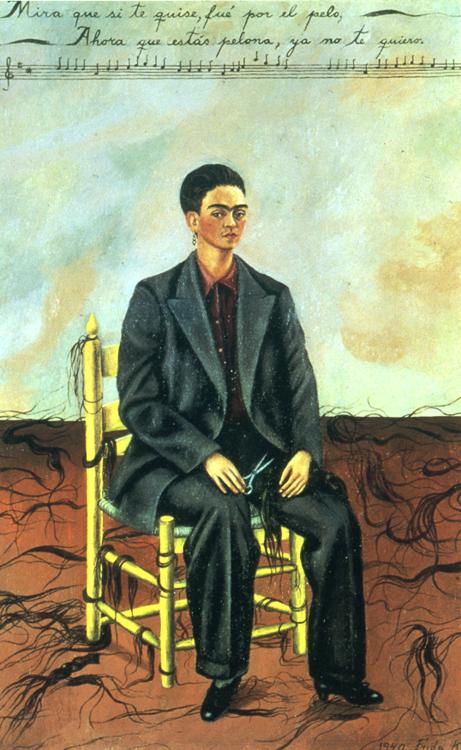
Kahlo. Self Portrait With Cropped Hair."Burns takes further exception to the construction of this page: "It's really a problem to set up a list of artists that are 'feminist' when the only thing all of them share is a vagina - these kind of assumptions of lumping women together simply because they're women is everything that's wrong with feminist thinking today."
In 1788 she became translator and literary advisor to Joseph Johnson, the publisher of radical texts. In this capacity she became acquainted with and accepted among the most advanced circles of London intellectual and radical thought. When Johnson launched the Analytical Review in 1788, Mary became a regular contributor of articles and reviews. In 1790 she produced her Vindication of the Rights of Man, the first response to Edmund Burke’s Reflections on the Revolution in France. She was furious that the man who had once defended the American colonies so eloquently should now assault the sacred revolution and libel Richard Price, a close friend of her Newington days when she briefly ran a primary school she had started with a friend.
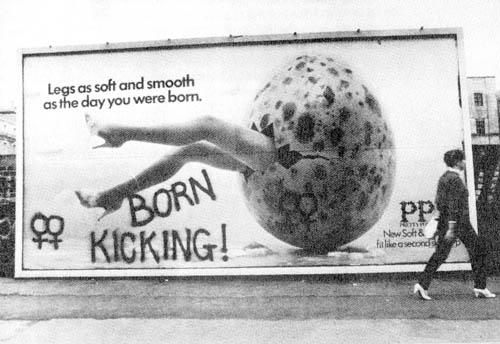
"Ernest Becker, a humanist psychologist, is quoted by Dworkin: "… man needs objects in order to come into being as an organism, and subsequently in order to provide for continuing action and experience. The organism needs objects in order to feel its own powers and presence" (Ibid, 104). This is a weak argument if appropriated by feminists primarily because the "man" referred to here is, I believe, mankind of the type that includes woman. In this case I see no difference between men and women as both must develop experiences gained by an interaction between themselves and the "objects" that surround them. She has utilised a generalisation to attribute a behaviour that she thinks is specifically male."
In it, she accused Burke, the erstwhile champion of liberty, of being “the champion of property”. Mary proved to be an excellent polemicist, and she had written in anger. The book sold well. She was not highly educated, but she somehow grasped how to read critically and widely; these skills together with her curiosity and determination were really all she needed. The “Vindication” is sometimes long-winded, ill-punctuated, and filled with an abundance of hot air, but it is the work of a well informed mind, venting spleen in an honest rant.
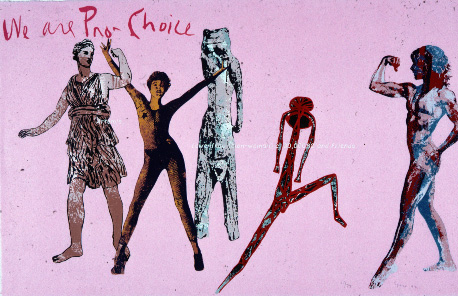
Nancy Spero. We Are Pro-Choice. "Also, Spero is concerned with work of a political nature. The depiction of the female form is one that has occupied her (maybe even preoccupied her) for a long time and, particularly, the idea of the female form being depicted by a male artist. She makes art that is freed from this "male gaze", art that is done by a woman for other women. This approach may be considered exclusive but really it is not. Anyone can approach the work and become involved with it. In the case of We Are Pro-Choice, it is a combination of images of women from the ages. They are removed from their historical context and plopped down on the page, almost delighting in their freedom. Spero has chosen the images and arranged them such that they activate the space in which they exist, exhibiting a freedom that comes from the unity of the female images shorn, by their seemingly random juxtaposition, of the baggage of the past."
“Vindication of the Rights of Woman” was her next work. It is no prose masterpiece , but it has never failed to arouse its audience. , in one way or another. Horace Walpole unintentionally set the style for the book’s foes. Writing to his friend Hannah More in August, 1792, he referred to Thomas Paine and to Mary as “philosophizing serpents” and was glad to hear you have not read the tract of the last mentioned writer. I would not look at it.” Neither would many another of Mary’s assailants, the most virulent of whom, Ferdinand Lundberg, surfaced at the late date of 1947 with a tract of his own, ” Modern Woman, the Lost Sex”. Savagely misogynistic as it is, this book was hailed in its time as “the best book yet to be written about women.”
Lundberg calls Mary the Karl Marx of the feminist movement, and the “Vindication” a “fateful book,” to which “the tenets of feminism, which have undergone no change to our day, may be traced.” He warned that she was ” an extreme neurotic of a compulsive type” who “wanted to turn on men and injure them.” This was malicious bunk. This ancestress of the Women’s Liberation Movement did not call for an end to woman’s traditional role of wife and mother nor call anyone a chauvinist,and delighted in giving birth. By today’s standard she was hardly a hard-core feminist revolutionary.
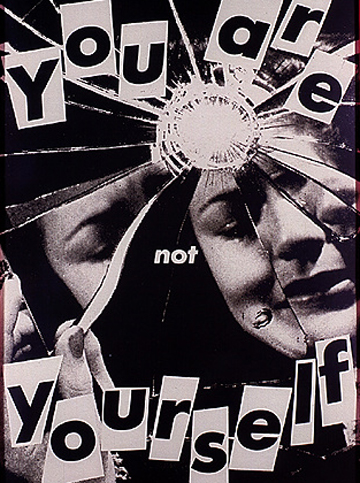
"...The major theoretical concepts of this period are riddled with gendered significance, although tracing gender in the maze of writings of this time is a task complicated by the unstable role of sexuality in theories of aesthetic pleasure. According to its most austere analysis—which came to dominate aesthetics and philosophy of art—aesthetic enjoyment has nothing to do with sexuality at all: Aesthetic pleasure is not a sensuous, bodily gratification; it is free from practical considerations and purged of desire. The two kinds of desire that most interrupt aesthetic contemplation are hunger and sexual appetite, which are the “interested” pleasures par excellence. Aesthetic pleasures are “disinterested” (to use Kant's term) and contemplative. It is disinterestedness that rids the perceiver of the individual proclivities that divide people in their judgments
that clears the mind for common, even universal agreement about objects of beauty."In one respect, at least, Lundberg hits the mark: He blamed Mary for starting women in the pernicious habit of wanting an education. In the nineteenth century, he relates, English and American feminists were hard at work. “Following mary Wollstonecraft’s prescription, they made a considerable point about acquiring a higher education.” This is precisely Mary’s prescription, and the most dangerous idea in her fateful book.
“Feminist art is not some tiny creek running off the great river of real art. It is not some crack in an otherwise flawless stone. It is, quite spectacularly I think, art which is not based on the subjugation of one half of the species. It is art which will take the great human themes — love, death, heroism, suffering, history itself — and render them fully human. It may also, although our imaginations are so mutilated now that we are incapable of the ambition, introduce a new theme, one as great and rich as those others — should we call it ‘joy’?” Andrea Dworkin (1946-), American feminist critic,
“Men complain and with reason, of the follies and caprices of our Sex,” she writes in Chapter 1. “Behold,I should answer, the natural effect of ignorance,” Women, she thinks, are usually so mindless as to be scarcely fit for their roles of wives and mothers. Neverthless, she believes this state not to be part of the feminine nature, but the result of an equally mindless oppression, as demoralizing for men as for women. If a woman’s basic mission is as a wife and mother, need she be an illiterate slave for this?
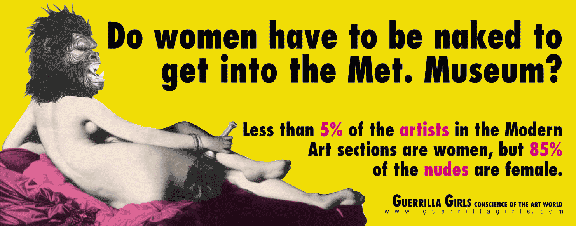
"Guerrilla Girls, Do women have to be naked to get into the Met. Museum? 1989, advertisement. Asked to design a billboard for the Public Art Fund in New York, the Guerrilla Girls submitted this design. The PAF said it, "wasn't clear enough," and rejected it. The Guerrilla Girls then paid to post it on NYC buses, until the bus company canceled the lease, saying that the image, based on Ingres' famous odalisque, was too suggestive and that the figure appeared to have more than a fan in her hand."
The heart of the work is Mary’s attack on Jean Jacques Rousseau. In “Emile”, Rousseau had set forth some refreshing new ideas for the education of little boys. But women, he decreed, are tools for pleasure, creatures too base for moral or political or educational privilege. Mary recognized that this view was destined to shut half the human race out of all hope for political freedom.
“On the good constitution of mothers depends primarily that of the children; on the care of women depends the early education of men; and on women, again, depend their morals, their passions, their tastes, their pleasures, and even their happiness. Thus the whole education of women ought to be relative to men. To please them, to be useful to them, to make themselves loved and honored by them, to educate them when young, to care for them when grown, to council them, to console them, and to make life agreeable and sweet to them—these are the duties of women at all times, and should be taught them from their infancy. Unless we are guided by this principle we shall miss our aim, and all the precepts we give them will accomplish nothing either for their happiness or for our own.” ( Rousseau )
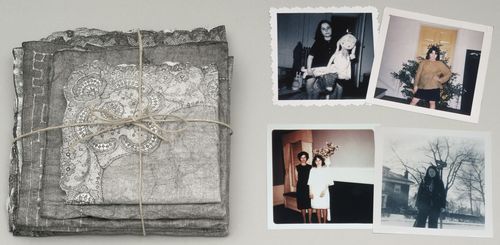
"What Girls Know About Grids: For Leslie Gore, Mo Tucker, Laura Nyro, and Ma Cass Kiki Smith (American, born Germany 1954) 2000. Multiple of eight etching and relief etchings on handmade Japanese paper attached back-to-back, folded and tied with twine, and four photograph on machine-made resin-coated paper, composition and sheet: (unfolded): various dimensions,..."
“Vindication” is a plea that the “rights of men” ought to mean the “rights of humanity.” The human right that she held highest was the right to have a mind and think with it. Virginia Woolf, who lived through a time of feminist activity, thought the “Vindication” was a work so true “as to seem to contain nothing new.” Its originality, she wrote, rather too optimistically, had become a commonplace.
“Vindication” went quickly into a second edition. Mary,s name was soon known all over Europe. But as she savored her fame, and she did savor it, she found that the edge was wearing off and that she was rather lonely. So far as anyone knows, Mary had reached this point in her life without ever having had a love affair. Johnson was the only man she was close to, and he was, as she wrote him, “a father or a brother, you have been both to me.”
Mary was now in the company of Swiss painter Henry Fuseli, and suddenly she developed what she thought was a platonic passion in his direction. He rebuffed her, and in the winter of 1792 she went to Paris, partly to escape her embarrassment but mainly because she wanted to observe the workings of the Revolution firsthand.
There has been considerable debate among feminist scholars concerning how to assess the values associated with genius and artistic accomplishment. Some have argued that the idea of genius itself is suspect because of the great disparities in education available to people, and the concept ought simply to be discarded. In addition, valorizing the accomplishments of one individual perpetuates the neglect of joint and communal creativity in favor of a kind of masculine heroism. (In fact, earlier feminist art was often collaborative, an explicit rejection of the idea of individual creativity in favor of joint efforts among women.) Other feminists disagree and have located alternative criteria at work in women’s achievements, arguing that one can discern traditions of female genius at work in the body of art produced by women (Battersby, 1989).
“Despite their differences, theories of the gaze reject the idea that perception is ever merely passive reception. All of these approaches assume that vision, the quintessential aesthetic sense, possesses power: power to objectify—to subject the object of vision to scrutiny and possession. The male gaze has been a theoretical tool of inestimable value in calling attention to the fact that looking is rarely a neutral operation of the visual sense. As Naomi Scheman states:
Vision is the sense best adapted to express this dehumanization: it works at a distance and need not be reciprocal, it provides a great deal of easily categorized information, it enables the perceiver accurately to locate (pin down) the object, and it provides the gaze, a way of making the visual object aware that she is a visual object. Vision is political, as is visual art, whatever (else) it may be about.
Theories of the gaze stress the activity of vision, its mastery and control of the aesthetic object. These theories reject the separation of desire from pleasure, reinstating into the core of beauty the sort of erotic, covetous gaze that was eliminated from aesthetic disinterestedness. While not all art invites understanding in terms of the gaze, much does; perhaps nowhere is the ideology of extreme disinterested contemplation more questionable than when applied to paintings of female nudes, which one feminist scholar argues virtually define the modern fine art of painting (Nead, 1992). Aesthetic ideologies that would remove art from its relations with the world disguise its ability to inscribe and to reinforce power relations.



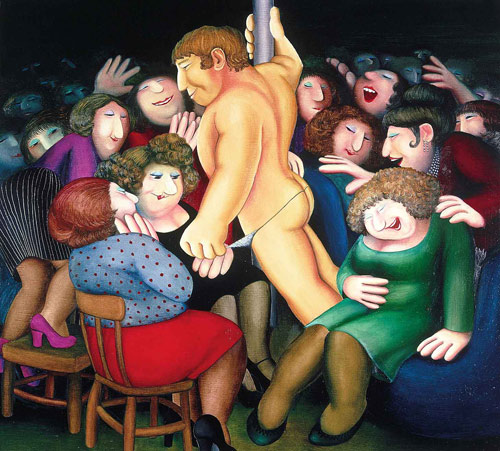



 COMMENTS
COMMENTS
George Bernard Shaw said when asked about the topic men/women: “What man or what woman are you talking about?” And that is the question, who? Generalizations can be made, but they are not very accurate on the personal level, they are like sort of guidances, because human brain is too complex and its behavior is consequently complex, usually motivated at the same time for a myriad of biological, psychological, social motives, besides memories, traumas, experiences, etc.
Sexuality is so different in both sexes; hormones condition it; men are more visually excited, that`s why there are so many female nude paintings; men are consequently more easily aroused, their sexuality is more biological, women more psychological. Too big a topic.
Do you see those ladies on the night`s out party? They are being curious, having fun in a sort of pajama party, but they are not experiencing sexual arousal.